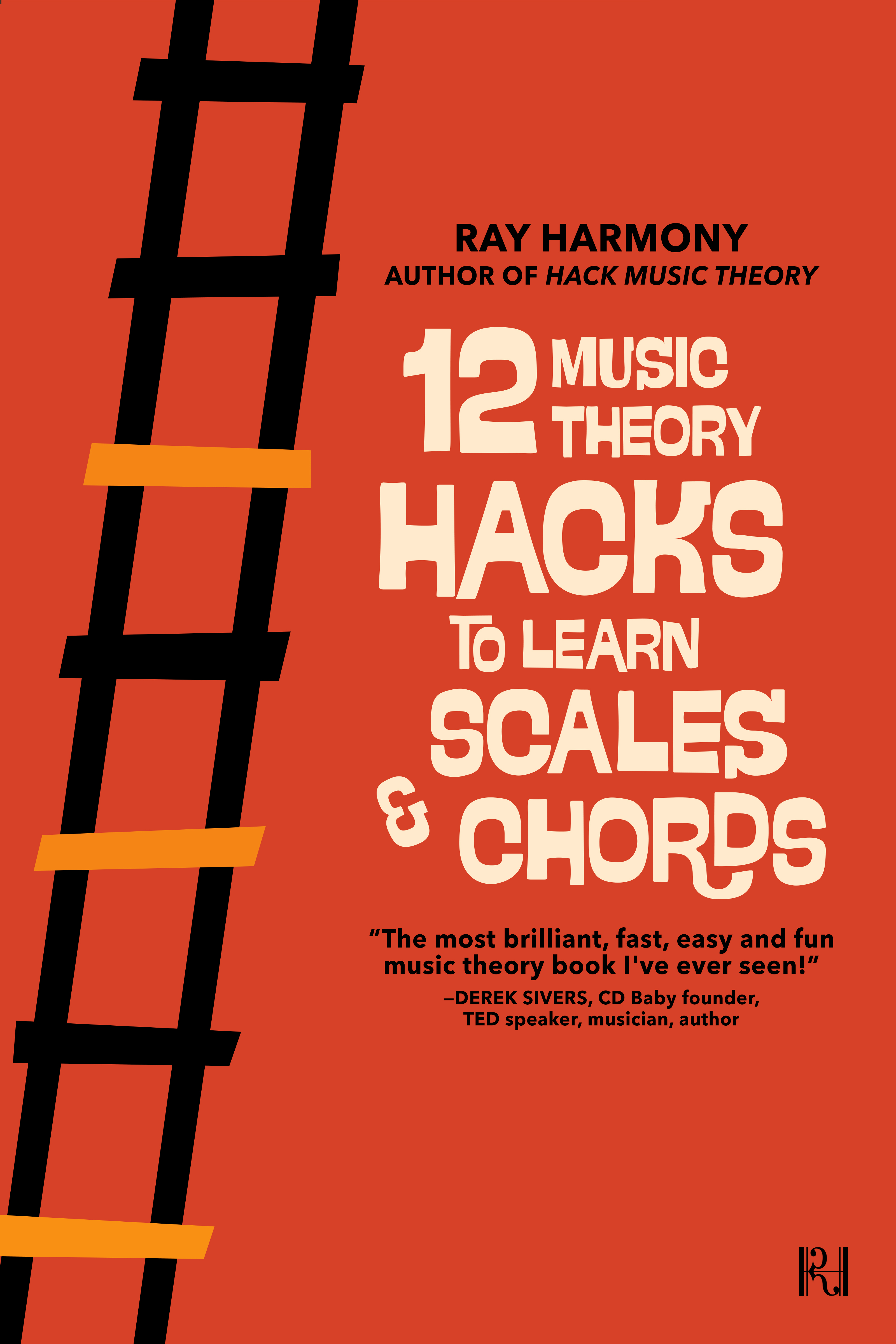Today on 3-Minute Theory: How to start writing a chord progression.
The first thing you need to decide is whether you want a happy vibe (AKA major), or a sad vibe (AKA minor). You’ve got three options on both sides, and these options are called the modes. There is an extra seventh mode, but it’s very dissonant and is not really used in popular music that much, so we’re gonna forget about it for now.
Next up, the “white note hack”. Use only the white notes to make your chord progressions, because it’s super simple, and if you do need to move your chord progressions up or down into a different key later, you can just grab all the MIDI and move it. Easy!
MAJOR (happy) modes:
Now, if you want happy vibes, draw the chord C E G into the piano roll of your DAW. This is our happy (major) chord. The way we build chords is by playing a note, skipping the next note up, then playing the next note, and so on. Start your chord progression on C, if you want a straight-up happy sound. This is the Ionian mode (AKA the major scale). Now, grab that MIDI chord and move it to F. If you want a happy but quirky sound to your chord progression, start on F. This is the Lydian mode. Grab that MIDI chord again and move it to G. If you want a happy but serious sound to your chord progression, start on G. This is the Mixolydian mode. Those are your three major options.
MINOR (sad) modes:
Now, if you want sad vibes, draw the chord A C E into your piano roll. This is our sad (minor) chord. Start on A if you want a straight-up sad or serious sound to your chord progression. This is the Aeolian mode (AKA the natural minor scale). Grab that MIDI chord and move it to D. If you want a sad but hopeful sound to your chord progression, start on D. This is the Dorian mode. Grab that MIDI chord again and move it to E. If you want a dark sound to your chord progression, start on E. This is the Phrygian mode. Those are your three minor options.
For an example, let’s just start on D, for the sad but hopeful Dorian mode. We’ve only got the first chord in the mode now, so we still need to get the other six chords. To do this, we just start on each of the white notes and follow that play/skip/play/skip/play formula to build all the chords in that mode. Here are the chords in D Dorian: D F A / E G B / F A C / G B D / A C E / B D F / C E G.
Now, no matter what mode you’re using in this white note hack, I want you to find the B D F chord and delete it, because it’s really dissonant. It’s a diminished triad, and is not used in popular music that much, so for now we’re just gonna get rid of it. Okay, so these are the six chords that you can use to make your chord progression. You can use as many or as few as you want. Be sure to start on that first chord (for now) so it really anchors your chord progression to its mode.
If you want to go deeper into writing the modes and writing chord progressions using them, please check out my Hack Music Theory for Songwriting & Producing PDF. Thanks for reading, and happy songwriting!
Ray Harmony
Music Teacher
Victoria BC, Canada
 | |
Wooohooo!!! You're a mere 30 minutes away from being even smarter than you already are. Just head over to your inbox now for your free download.
